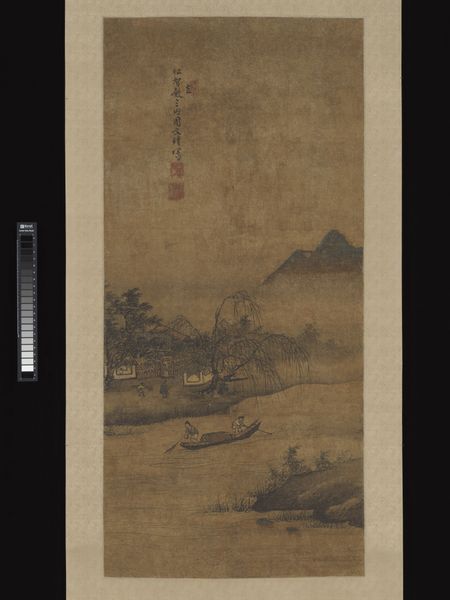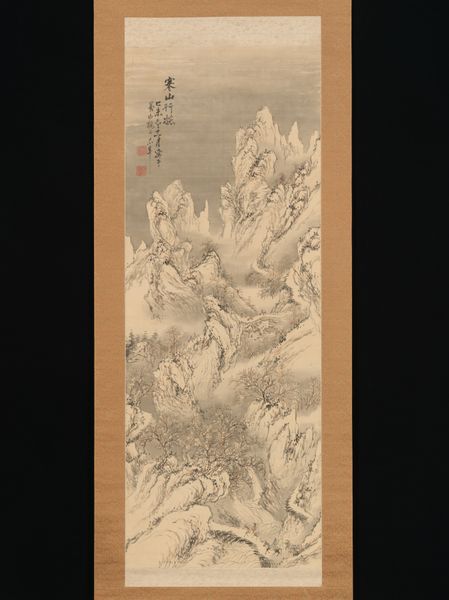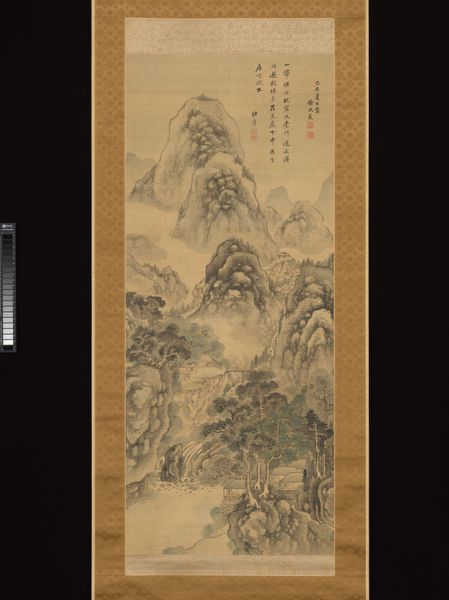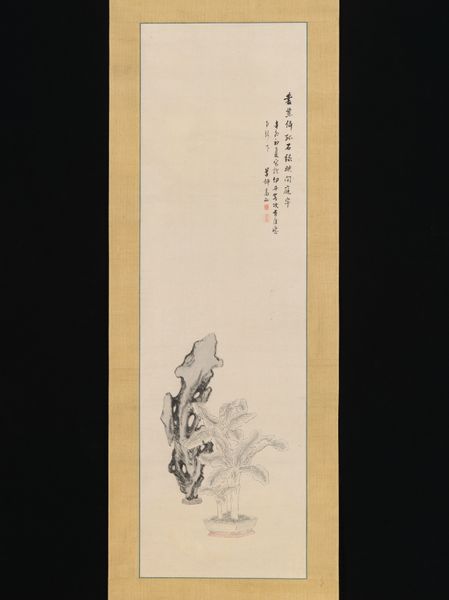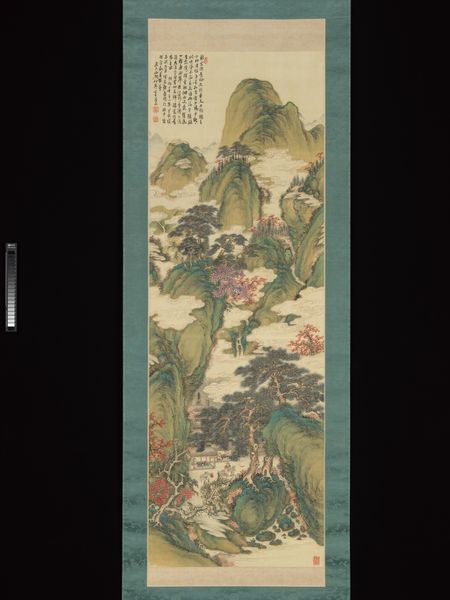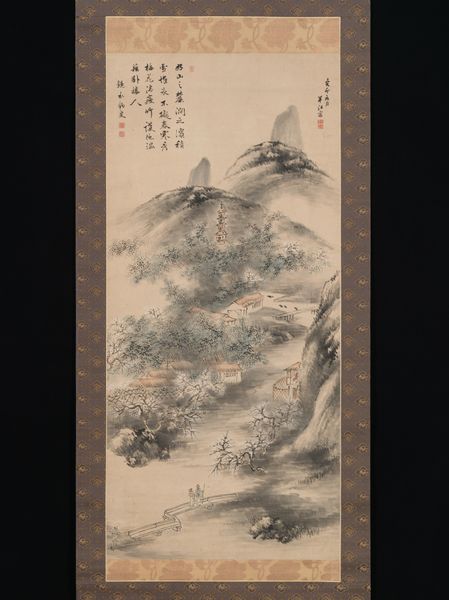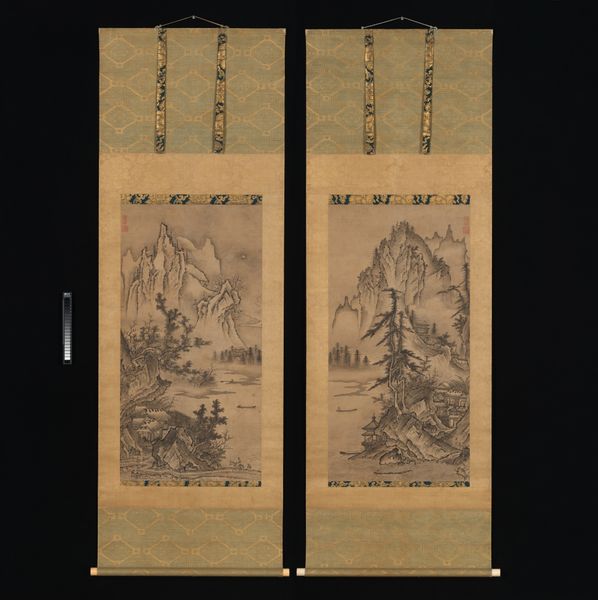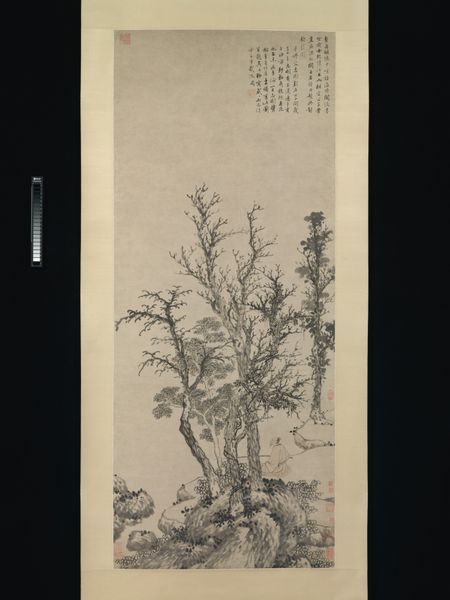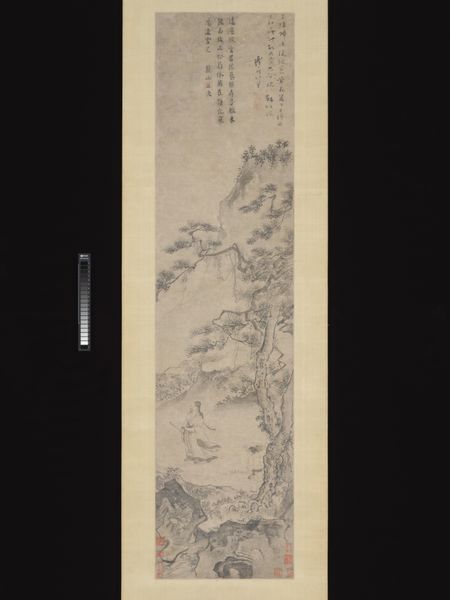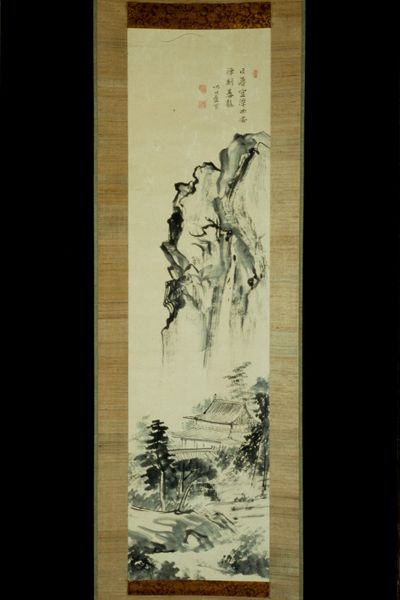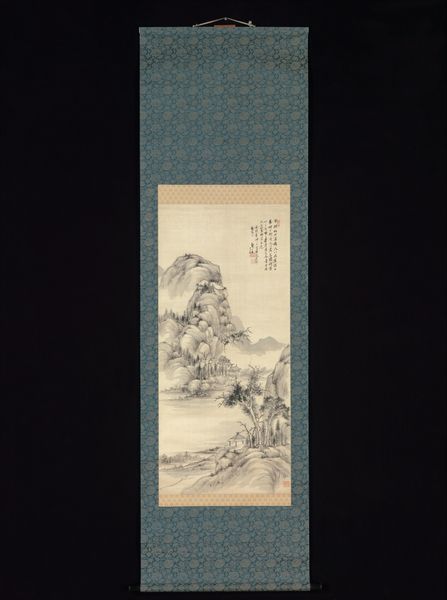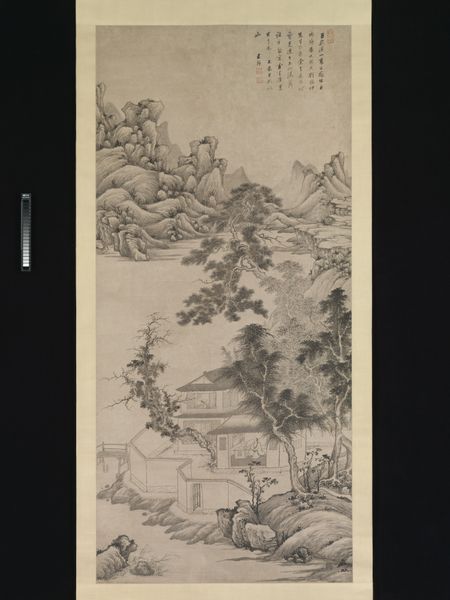
painting, paper, ink
#
painting
#
sculpture
#
asian-art
#
landscape
#
paper
#
22_ming-dynasty-1368-1644
#
ink
#
china
Dimensions: Image: 65 3/4 × 20 1/4 in. (167 × 51.4 cm) Overall with mounting: 8 ft. 9 in. × 27 1/2 in. (266.7 × 69.9 cm) Overall with knobs: 8 ft. 9 in. × 31 1/2 in. (266.7 × 80 cm)
Copyright: Public Domain
Editor: Before us is Zhang Ruitu’s “Mountains Along Riverbanks,” made with ink on paper sometime between 1600 and 1633. It’s incredibly serene, with all the mist and towering mountains. What strikes you when you look at this piece? Curator: What I see here isn't just a landscape, but a powerful statement about social unrest during the late Ming Dynasty. Landscape paintings weren’t just pretty pictures; they were often coded responses to political realities. Considering Zhang Ruitu’s tumultuous career as an official and his eventual disgrace, how might we interpret this seemingly tranquil scene as a form of dissent? Editor: That’s fascinating! I wouldn’t have thought of it that way. I just saw pretty mountains. So the mist…does that symbolize something specific? Curator: The mist could be interpreted as obfuscation, a way of obscuring direct criticism while still making a commentary. It softens the harsh realities, creating space for interpretation, much like the artist navigating a treacherous political landscape. Do you notice anything in the composition that feels unbalanced or unsettling, despite the surface serenity? Editor: Now that you mention it, the mountains feel almost…precarious? Like they’re about to crumble. Curator: Exactly! That precariousness might reflect the artist's perception of the empire's stability. Artists often used metaphor to critique power. What does this say about Zhang Ruitu's position in society? Editor: It suggests he felt powerless, maybe even afraid. It’s amazing how much context changes the whole feeling of the artwork. Curator: Precisely. Understanding the historical context allows us to see beyond the surface beauty and appreciate the deeper layers of meaning and resistance embedded within. I hope people are willing to dive deeper and be open to different readings of historical works. Editor: Absolutely! This has totally changed how I’ll look at landscape paintings from now on!
Comments
No comments
Be the first to comment and join the conversation on the ultimate creative platform.
